For triangles, each of the first three "outer" gl_TessLevelOuter[] tessellation values control the subdivision of one of the three sides of the triangle, and the fourth value is unused.
Only the first "inner" gl_TessLevelInner[0] value is used, to determine the subdivision of the the inner triangle. This inner level is more confusing than the outer level, so looking at a picture is better than trying to explain it.
Here is a similar image to the accepted answer, but with the inner value row labels corrected, and a program you can use to experiment with your own values.
The image source link on the accepted answer is currently broken (May 2019). Plus the row labeled "Inner Tesselation Factor" is off by one. The inner tessellation value of the first row is actually zero.

Python program for creating the above image:
import inspect, glfw, numpy
from OpenGL.GL import *
from OpenGL.GL import shaders
glfw.init()
tile_size, tile_count = 80, 8
width = tile_size * tile_count
glfw.window_hint(glfw.SAMPLES, 16)
window = glfw.create_window(width, width, 'tessellation demo', None, None)
glfw.make_context_current(window)
glBindVertexArray(glGenVertexArrays(1))
triangle = numpy.array([
[-0.9, -0.9, 0.5], # lower left
[ 0.9, -0.9, 0.5], # lower right
[ 0.0, 0.9, 0.5], # top
], dtype=numpy.float32)
glBindBuffer(GL_ARRAY_BUFFER, glGenBuffers(1))
glBufferData(GL_ARRAY_BUFFER, triangle, GL_STATIC_DRAW)
glEnableVertexAttribArray(0)
glVertexAttribPointer(index=0, size=3, type=GL_FLOAT, normalized=False, stride=0, pointer=None)
program = shaders.compileProgram(
shaders.compileShader(source=inspect.cleandoc('''
#version 460 core
in vec3 aPos;
void main() {
gl_Position = vec4(aPos, 1);
}
'''), shaderType=GL_VERTEX_SHADER),
# Tessellation control shader not defined here because default is OK.
shaders.compileShader(source=inspect.cleandoc('''
#version 460 core
layout(triangles) in;
void main() {
gl_Position = (gl_TessCoord.x * gl_in[0].gl_Position) +
(gl_TessCoord.y * gl_in[1].gl_Position) +
(gl_TessCoord.z * gl_in[2].gl_Position);
}
'''), shaderType=GL_TESS_EVALUATION_SHADER),
shaders.compileShader(source=inspect.cleandoc('''
#version 460 core
out vec4 fragColor;
void main() {
fragColor = vec4(vec3(0.1), 1); // dark gray
}
'''), shaderType=GL_FRAGMENT_SHADER),)
glUseProgram(program)
glPolygonMode(GL_FRONT_AND_BACK, GL_LINE)
glPatchParameteri(GL_PATCH_VERTICES, 3)
glClearColor(0.95, 0.95, 0.95, 1) # pale gray
outer_levels = numpy.array([1, 1, 1, 1], dtype=numpy.float32)
inner_levels = numpy.array([1, 1], dtype=numpy.float32)
while not glfw.window_should_close(window):
glClear(GL_COLOR_BUFFER_BIT)
for outer in range(tile_count + 1): # increase outer tessellation factors left to right
for inner in range(tile_count + 1): # inner tesselation factors top to bottom
glViewport(outer * tile_size, width - inner * tile_size, tile_size, tile_size)
outer_levels[:] = [outer + 1] * 4 # range 1 to 9; zero means no triangles at all
inner_levels[:] = [inner] * 2 # range 0 to 8
glPatchParameterfv(GL_PATCH_DEFAULT_OUTER_LEVEL, outer_levels)
glPatchParameterfv(GL_PATCH_DEFAULT_INNER_LEVEL, inner_levels)
glDrawArrays(GL_PATCHES, 0, 3)
glfw.swap_buffers(window)
glfw.poll_events()
glfw.terminate()
 Source:
Source: 